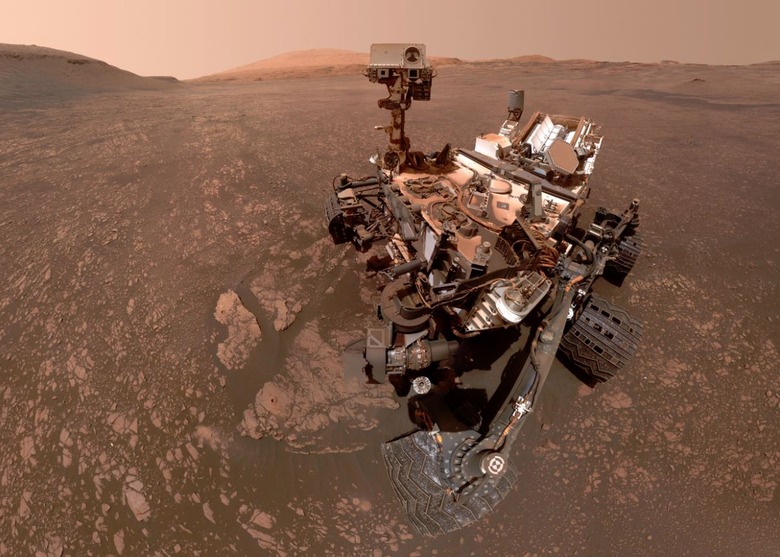NASA's Curiosity Rover Is On A Road Trip
- NASA is sending its Curiosity rover on a journey to a new area of Mount Sharp, the massive peak that sits in the center of the Gale Crater.
- The journey is short by Earth standards at just over a mile, but it'll be a big accomplishment for the aging robot.
- When the rover arrives at its next destination it will investigate the presence of salts that may indicate ancient lakes once dominated the region.
Summer here on Earth means spending time outdoors, maybe a dip in the pool every now and then, and of course the ritual of traveling great distances in our vehicles. NASA's Mars Curiosity rover has spent over a year hanging out around an area of the colossal Mount Sharp known as the clay-bearing unit, and it's ready to make a move of its own.
In a new blog post declaring a "summer road trip" for Curiosity, NASA explains that the rover will spend a considerable amount of time forging a new path to a location that will allow it to scale a new area of the colossal Martian mountain. The trip will only put around a mile on Curiosity's odometer, but that's no small feat for a robot exploring another planet.
Mount Sharp is a towering structure that sits in the middle of a huge crater. The mountain stands some three miles high, and it's made up of layers of material that slowly but surely piled up to create what we see today. This is actually incredibly useful for researchers, as the mountain acts as something of a timeline for Mars, revealing things about what Mars was like when each layer was building up.
As it travels to its new destination, the rover will do its best to navigate around hazards. NASA recently launched a really cool program that allowed science fans to help the rover decide what areas of the Martian surface were dangerous and what kinds of terrain would be suitable for traveling over. The rover takes commands from its handlers back on Earth, but it still has to try to make good decisions on the fly as well. The data NASA gathered helps to ensure the robot knows what kind of terrain is safe.
"Curiosity can't drive entirely without humans in the loop," Matt Gildner, rover driver and member of NASA's Jet Propulsion Laboratory said in a statement. "But it does have the ability to make simple decisions along the way to avoid large rocks or risky terrain. It stops if it doesn't have enough information to complete a drive on its own."
The rover's goal is to eventually make it to an area of Mount Sharp known as the "sulfate-bearing unit." As the name suggests, this area appears to be rich in sulfates, or salts, which may indicate the presence of water long ago that has since evaporated and left only the minerals behind.
